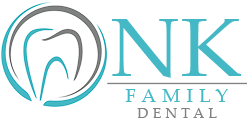
You may have heard the terms “tooth abscess” or “abscessed tooth,” without quite understanding the condition itself. Although not discussed as frequently as tooth decay and periodontal (gum) disease, a tooth abscess can lead to serious — even life-threatening — complications if not treated in a timely manner. Here’s what you need to know about the main causes, how to recognize the symptoms of a tooth abscess, and the health risks of avoiding treatment.
What is a Tooth Abscess?
A tooth abscess is a pocket of pus from a bacterial infection in the gums. An abscess usually looks like a red, swollen bump, boil, or pimple. It affects the involved tooth, but the infection can also spread to surrounding bone and teeth. Abscesses can occur in different areas around a tooth for various reasons.
Cleveland Clinic identifies three types of tooth infections that can cause abscesses:
Gingival — This infection develops in the gums. It doesn’t usually affect the tooth or supporting structures.
Periapical — A periapical abscess is an infection that forms at the tip of the root. This occurs because bacteria can spread to the inside of the tooth to the pulp through a fracture or cavity. The pulp is the innermost part of the tooth that contains nerves and blood vessels. When bacteria invades the pulp, they can spread to the tip of the tooth’s root, causing the infection to spread to the bone — eventually leading to an abscess.
Periodontal — This infection starts in bone and tissues that support the tooth. A periodontal abscess usually results from periodontitis or gum disease and is more common among adults.
Certain types of people are at greater than average risk of developing a tooth abscess. They include the following:
Smokers — People who smoke are about twice as likely to get tooth abscesses as those who don’t.
People who have poor oral hygiene — Regularly brushing, flossing and getting regular dental examinations and cleanings reduces the bacteria that causes an abscessed tooth — as well as dental caries (decay) and periodontal disease.
People with dry mouth (xerostomia) — Bacteria thrive in a mouth with a low amount of saliva. Our blog post — “What Causes Dry Mouth?” — covers this condition in detail.
People with a weakened immune system — Diseases or medications can lower your immune response, making it harder to fight off germs and bacterial infections.
However, anything that creates an opening for bacteria to get into your tooth or surrounding tissues can lead to a tooth abscess. Possible causes include:
- An untreated cavity.
- Broken, chipped or cracked teeth — bacteria can seep into any opening in a tooth and spread to the pulp.
- Failed root canal treatment – infection that led to the procedure wasn’t removed completely, allowing it to recur.
- Injury to the tooth — trauma to a tooth can injure the pulp and make it vulnerable to infection, even if there’s no visible crack.
- Periodontal disease — left untreated, it will spread to deeper tissues. Our blog post — “What is Periodontal Gum Disease?” — covers this topic in detail.
Tooth Abscess Symptoms
The main symptom is a severe toothache. The pain is continuous. It does not stop, and can be described as gnawing, sharp, shooting, or throbbing.
Cleveland Clinic and Mount Sinai provide other symptoms to watch out for:
- Bad breath.
- Bitter taste in the mouth.
- A sudden rush of foul-tasting, foul-smelling salty fluid in the mouth. This occurs when the abscess ruptures, and may be followed by relief from pain — which you should not mistake for the abscess “going away” on its own.
- General discomfort, uneasiness, or ill-feeling.
- Fever.
- Pain when chewing.
- Sensitivity of the teeth to hot or cold.
- Swelling of the gum over the infected tooth, which may look like a pimple.
- Swollen neck glands.
- Swollen area of the upper or lower jaw — this is a very serious symptom that requires immediate attention.
In fact, if you experience any of the above symptoms, call your dentist immediately for an emergency appointment! An abscess is an infection, and will not spontaneously resolve. Attempting to treat it yourself with home remedies will only allow it to spread, and endanger your health — and even life — by delaying medical treatment.
Why It’s Dangerous to Ignore a Tooth Abscess
Because it can take weeks or months for the infection to spread, you may be tempted to continue to ignore it, believing the situation is not urgent. However, if left untreated, the infection in the abscess can spread to your jaw and to other areas of your head and neck. As Colgate points out, “If an abscess in a lower tooth spreads, it can infect your neck and floor of your mouth, making it difficult for you to breathe. An abscess in one of your upper teeth could spread to your sinuses and eyes.”
In rare cases, the infection can travel to your heart (endocarditis) and brain (bacterial meningitis). You could also develop sepsis — a life-threatening infection that spreads throughout the body. Those with a weakened immune system are at even greater risk.
Don’t make the mistake of thinking that the tooth is no longer abscessed if the abscess ruptures and the pain significantly decreases. Moveover, as Cleveland Clinic points out, the pain may stop if the infection causes the pulp inside your tooth to die. “The pain stops because the nerve isn’t functioning anymore, so you may not be able to feel it. However, the bacteria will continue to spread and destroy surrounding tissue. If you have tooth abscess symptoms, see your dentist even if you no longer have pain.”
Your dentist may use the following methods to diagnose a tooth abscess, in addition to examining your tooth and the area around it:
Tap on your teeth — A tooth that has an abscess at its root is generally sensitive to touch or pressure.
Take an X-ray — This can help identify an abscess, as well as allow the dentist to determine whether the infection has spread, causing abscesses in other areas.
Recommend a computed tomography (CT) scan — If the infection has spread to other areas in your neck, a CT scan may be used to see how severe the infection is.
Once a tooth abscess has been diagnosed, possible treatments include the following:
Incise and drain the abscess — The dentist makes a small incision into the abscess, allowing the pus to drain. The dentist then washes the area with salt (saline) water. Your dentist may place a small rubber drain to keep the area open for drainage while the swelling goes down.
Perform a root canal — This can remove the infected pulp and save the tooth. Our blog post — “What You Need to Know About a Root Canal” — covers this procedure in detail.
Pull the affected tooth — If the tooth can’t be saved, your dentist will extract the tooth and drain the abscess to get rid of the infection.
Prescribe antibiotics — If the infection is limited to the abscessed area, you may not need antibiotics. But if the infection has spread to nearby teeth, your jaw or other areas, your dentist will likely prescribe antibiotics to stop it from spreading further. Your dentist may also recommend antibiotics if you have a weakened immune system.
The Take-Home Message
The best way to prevent a tooth abscess is to practice good oral hygiene and schedule twice-yearly check-ups and cleanings with your dentist. Even if you do, however, trauma to one or more teeth can injure the pulp, inviting infection — while a failed root canal leaves behind some amount of infected pulp. Because of the serious health risks of leaving an abscessed tooth untreated, pay attention to symptoms and call your dentist immediately if you experience any of them.
At NK Family Dental, it is our mission to provide the highest quality and most compassionate oral care to our Chicago patients, including both dental and periodontal services. Our practice is trusted for advanced oral surgery procedures and comfortable root canal treatment.
Our dental specialists include our general dentist, Dr. Nilofer Khan, our endodontist, Dr. Sabek, and our periodontist, Dr. Amir Danesh. Dr. Danesh is a board-certified periodontist and Diplomat of the American Board of Periodontology. He has contributed to the publication of two books, as well as published over 20 papers in prestigious dental research journals.
We understand that the main concern you may have is cost, which is why we accept all major PPO plans for dental insurance and also offer our in-house dental plan. Please see our financing page for more information.
We serve the neighborhoods of Logan Square, Bucktown, Humboldt Park, and Wicker Park with the dedication that’s earned us the reputation as the Best Dentist in Chicago!
Schedule your visit through ZocDoc, or contact us directly. We look forward to treating you soon!
